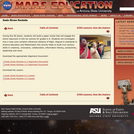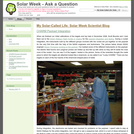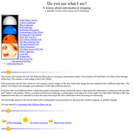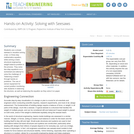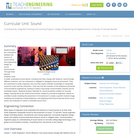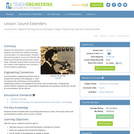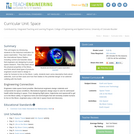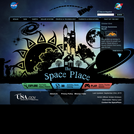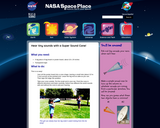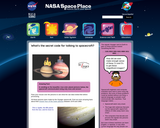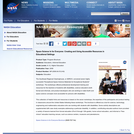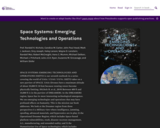Short Description:
SPACE SYSTEMS: EMERGING TECHNOLOGIES AND OPERATIONS (SSETO) is our seventh textbook in a series covering the world of UASs / CUAS / UUVs. SSETO takes on a new purview of SPACE. UASs (Drones) have a maximum altitude of about 33,000 ft (10 km) because rotating rotors become physically limiting. (Nichols R. et al., 2019) Between 400 ft and 33,000 ft is in the purview of DREAMERS. In the DREAMERS region, Space has its most interesting technological emergence. We see emerging technologies and operations that may have profound effects on humanity. This is the mission our book addresses. We look at the Dreamer region from three perspectives:1) a Military view where intelligence, jamming, spoofing, advanced materials, and hypersonics are in play; 2) the Operational Dreamer Region; which includes Space-based platform vulnerabilities, trash, disaster recovery management, A.I., manufacturing, and extended reality; and 3) the Humanitarian Use of Space technologies; which includes precision agriculture wildlife tracking, fire risk zone identification, and improving the global food supply and cattle management. State-of-the-Art research by a team of fifteen SMEs is incorporated into our book. We trust you will enjoy reading it as much as we have in its writing. There is hope for the future.
Long Description:
SPACE SYSTEMS: EMERGING TECHNOLOGIES AND OPERATIONS is our seventh textbook in a series covering the world of UASs / CUAS/ UUVs. Other textbooks in our series are Drone Delivery of CBNRECy – DEW Weapons: Emerging Threats of Mini-Weapons of Mass Destruction and Disruption (WMDD); Disruptive Technologies with applications in Airline, Marine, Defense Industries; Unmanned Vehicle Systems & Operations On Air, Sea, Land; Counter Unmanned Aircraft Systems Technologies and Operations; Unmanned Aircraft Systems in the Cyber Domain: Protecting USA’s Advanced Air Assets, 2nd edition; and Unmanned Aircraft Systems (UAS) in the Cyber Domain Protecting USA’s Advanced Air Assets, 1st edition. Our previous six titles have received considerable global recognition in the field. (Nichols & Carter, 2022) (Nichols et al., 2021) (Nichols R. K. et al., 2020) (Nichols R. et al., 2020) (Nichols R. et al., 2019) (Nichols R. K., 2018)
Our seventh title takes on a new purview of Space. Let’s think of Space as divided into four regions. These are Planets, solar systems, the great dark void (which fall into the purview of astronomers and astrophysics), and the Dreamer Region. The earth, from a measurement standpoint, is the baseline of Space. It is the purview of geographers, engineers, scientists, politicians, and romantics. Flying high above the earth are Satellites. Military and commercial organizations govern their purview. The lowest altitude at which air resistance is low enough to permit a single complete, unpowered orbit is approximately 80 miles (125 km) above the earth’s surface. Normal Low Earth Orbit (LEO) satellite launches range between 99 miles (160 km) to 155 miles (250 km). Satellites in higher orbits experience less drag and can remain in Space longer in service. Geosynchronous orbit is around 22,000 miles (35,000 km). However, orbits can be even higher. UASs (Drones) have a maximum altitude of about 33,000 ft (10 km) because rotating rotors become physically limiting. (Nichols R. et al., 2019) Recreational drones fly at or below 400 ft in controlled airspace (Class B, C, D, E) and are permitted with prior authorization by using a LAANC or DroneZone. Recreational drones are permitted to fly at or below 400 ft in Class G (uncontrolled) airspace. (FAA, 2022) However, between 400 ft and 33,000 ft is in the purview of DREAMERS.
In the DREAMERS region, Space has its most interesting technological emergence. We see emerging technologies and operations that may have profound effects on humanity. This is the mission our book addresses. We look at the Dreamer Region from three perspectives:1) a Military view where intelligence, jamming, spoofing, advanced materials, and hypersonics are in play; 2) the Operational Dreamer Region; which includes Space-based platform vulnerabilities, trash, disaster recovery management, A.I., manufacturing, and extended reality; and 3) the Humanitarian Use of Space technologies; which includes precision agriculture wildlife tracking, fire risk zone identification, and improving the global food supply and cattle management.
Here’s our book’s breakdown:
SECTION 1 C4ISR and Emerging Space Technologies. C4ISR stands for Command, Control, Communications, Computers, Intelligence, Surveillance, and Reconnaissance. Four chapters address the military: Current State of Space Operations; Satellite Killers and Hypersonic Drones; Space Electronic Warfare, Jamming, Spoofing, and ECD; and the challenges of Manufacturing in Space.
SECTION 2: Space Challenges and Operations covers in five chapters a wide purview of challenges that result from operations in Space, such as Exploration of Key Infrastructure Vulnerabilities from Space-Based Platforms; Trash Collection and Tracking in Space; Leveraging Space for Disaster Risk Reduction and Management; Bio-threats to Agriculture and Solutions From Space; and rounding out the lineup is a chapter on Modelling, Simulation, and Extended Reality.
SECTION 3: Humanitarian Use of Space Technologies is our DREAMERS section. It introduces effective use of Drones and Precision Agriculture; and Civilian Use of Space for Environmental, Wildlife Tracking, and Fire Risk Zone Identification.
SECTION 3 is our Hope for Humanity and Positive Global Change. Just think if the technologies we discuss, when put into responsible hands, could increase food production by 1-2%. How many more millions of families could have food on their tables?
State-of-the-Art research by a team of fifteen SMEs is incorporated into our book. We trust you will enjoy reading it as much as we have in its writing. There is hope for the future.
Word Count: 111490
ISBN: 978-1-944548-48-3
(Note: This resource's metadata has been created automatically by reformatting and/or combining the information that the author initially provided as part of a bulk import process.)
